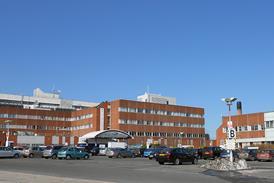The experiences of financial systems teach us how fragile organisations are susceptible to collapse, and what the NHS can learn about being more robust
Nassim Nicholas Taleb’s book Antifragile − about risks caused when an individual, organisation or system is fragile − describes “black swan” or rare events in financial systems that lead them to spectacularly blow up. But the lessons are generally applicable to the NHS.
Taleb is at pains to point out that if an organisation is fundamentally fragile in nature, it doesn’t require a black swan event to spark a disaster. In contrast, his notion of being “anti-fragile” is about more than robustness; when you are anti-fragile you can thrive on change, uncertainty and even chaos.
‘An illustration of the underlying problem has been the failure to do anything to tackle the crisis in emergency medicine staffing’
Unfortunately NHS bodies in general − and emergency departments in particular − far from being anti-fragile, are not even robust. If you are sent into panic because a locum doctor doesn’t turn up for a shift then any notion that you are robust is illusionary.
There is a certain irony in this given the profligacy of risk registers, resilience plans and the mini-industry surrounding capacity management. In truth, these documents and meetings are largely symptoms of, and reactions to, a failure to be genuinely robust.
An illustration of the underlying problem has been the failure to do anything of substance to tackle the crisis in emergency medicine staffing.
Common misconceptions
There is a common misunderstanding about the nature of elective and emergency activity, namely, the often reported view that unscheduled care is more predictable than elective care. While there is greater variability in elective workload by day and hour than in unscheduled care, the pattern and cause of variability is different − and this factor is key to understanding how the workload affects an organisation and its fragility.
You will certainly see a large variation in elective workload over a week. Friday typically shows a marked drop, while Sunday may well have no elective activity at all. Monday can be the busiest (perversely, given the tendency on that day for high unscheduled care activity coupled with poor bed availability).
The persistence of this pattern illustrates the difficulty of making changes to institutional inefficiencies in healthcare delivery.
With knowledge of consultant productivity and job plans you can predict with a high degree of accuracy how many patients will be treated on any particular day. Note that the variation is largely supplier not patient driven.
Last orders
By contrast, unscheduled care has non-linear characteristics – a fact disguised when attendances are compared one month to the next or even one week from another.
‘Certain demand peaks are essentially predictable; two such examples are when GP practices and pubs close’
While it is true that when viewed as a series of averages, attendances are reasonably predictable month on month and even hour by hour, what is important is what the average hides. The amount of traffic on the M25 is relatively predictable by hour and day of the week but your experience of a journey on it is quite different at 3am than at 5pm − as is the impact of any interruption in normal flow.
The latter point is particularly crucial, which is why travellers listen to radio reports. Knowing historical averages is some use but it has limitations.
I have heard A&E staff say many times that if only patients attended at a consistent rate everything would be OK. The point is, of course, that they don’t. It is predictable that non-linear attendances such as a sudden rush of ambulances will happen, if not when. Certain demand peaks are essentially predictable; two such examples are when GP practices and pubs close.
Unfortunately service provision all too rarely matches these times, mostly because, once again, historical patterns of provision have proved highly resistant to change.
Rocky road
We need accident and emergency departments to be anti-fragile but most are a long way from even being robust. Moreover, if the NHS concentrates its emergency services into fewer sites and those hospitals are not anti-fragile by Taleb’s definition (not the definition typical of NHS public consultation documents), then we will have increased risk.
In addition, it is not merely an issue around staffing numbers. Having fewer A&Es might mean better staffing, but has anyone asked if staff will find working in larger and busier units a more attractive proposition?
‘It is a strange business that tackles an excess of demand against staff supply by reducing the number of locations they work in’
The larger numbers of patients requiring admission make them more vulnerable to both times of high demand and problems with bed availability. If the required bed stock is miscalculated − and such equations are vulnerable to the endemic optimism bias of NHS planning − then regular performance failures are assured.
Centralisation of certain conditions and procedures is already well established and can bring demonstrable benefits. The scale of the A&E staffing crisis might make this the only practical solution (although it is a strange business that tackles an excess of demand against staff supply by reducing the number of locations they work in).
However, unless sized properly, the smaller number of hospitals with A&Es will not cope with demand. If you make a journey in the rush hour in the M25, only a fool expects a fast journey.
Robert Royce is an independent healthcare consultant



























1 Readers' comment